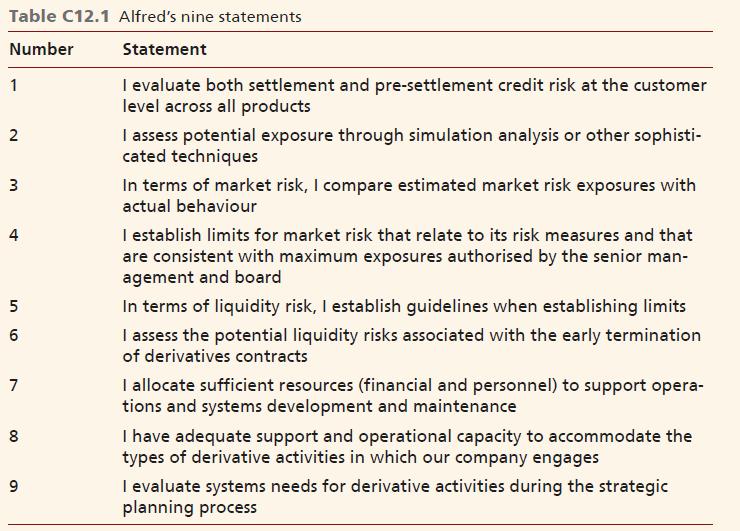Derivatives are contracts that derive their value from the performance of other, more basic, underlying variables, which
Question:
Derivatives are contracts that derive their value from the performance of other, more basic, underlying variables, which are generally but not limited to financial assets or rates (Hull, 2015). They are a category of financial instruments (like stocks and debt) and are used for speculating or hedging. Common derivatives include futures contracts, forward contracts, options, swaps and warrants. According to Swan (2000), the use of derivatives dates back to Venice in the 12th century.
Derivatives are used properly when they are neither misunderstood nor mishandled (Tavakoli, 2001). Various guidelines, rules and standards for risk management controls have been put forth by the Basel Committee as well as the Committee of Sponsoring Organisations of the Threadway Commission (COSO) among others. These have been translated into EU legislation such as the Capital Requirement Directive (CRD), Solvency II Directive (SII), and Markets in Financial Instruments Directive (MiFID). These require banks and other wealth management organisations to ensure that risks associated with derivatives are properly managed. The importance of giving proper attention and allocating sufficient resources towards risk management controls has increased following the 2008 financial crisis and ensuing recessions, and the massive financial losses by companies and government entities.
Alfred, an undergraduate student studying Insurance and Risk Management, is developing his research project. Following an internship at an international wealth management bank, he is intrigued to investigate the extent to which the users (consisting of managers, analysts, treasurers, brokers and investment bankers) and controllers (consisting of risk officers, auditors, compliance officers and regulators) of derivatives at the bank are giving proper attention towards risk management controls. Furthermore, he wants to test whether the overall scores across the two groups, on average, differed significantly from each other.
After obtaining the necessary ethical approval and agreement from the international wealth management bank, Alfred asks the HR manager to invite the users and controllers of derivatives at the bank to participate in a Web questionnaire he has developed using the SurveyMonkey cloud-based survey platform.
Alfred’s questionnaire contains nine statements derived from Bezzina and Grima’s (2012) ‘proper derivative use inventory’ that captures aspects related to the proper use of risk management controls. Respondents are asked to rate their level of agreement with each statement on an ordinal scale ranging from 1 = strongly disagree to 5 = strongly agree. These are listed in Table C12.1.

A total of 420 employees complete the survey – 310 users and 110 controllers (a total response rate of 56.2%). The data are then exported as an SPSS statistics software data file comprising whether the respondent was a user or controller of derivatives (‘Position’) and the scores the respondent provided for each of the nine statements (‘Q1’ to ‘Q9’). Although these data are entered using numeric codes, Alfred chooses to display the data as the responses represented by each code (Figure C12.1). The code ‘5’ is therefore displayed as ‘Strongly Agree’, the code 4 as ‘Agree’, the code 3 as ‘Neutral’, the code 2 as ‘Disagree’ and the code 1 as ‘Strongly Disagree’. Using SPSS Alfred calculates the factor score (the mean of the responses pertaining to the nine statements for each respondent) as a new variable (‘RMC’).

Questions
1. Alfred wants to describe the responses for each of the nine statements and for the factor score. Which statistic or statistics would you recommend and why?
2. Alfred wants to compare the factor score distributions for the users and controllers of derivatives separately. Which graph would you recommend and why?
3. Alfred wants to determine whether the factor scores of the users and controllers of derivatives differ significantly from each other. Which statistical test would you recommend and why?
4. Alfred has calculated that there is a significant statistical difference between the factor scores for the user and controllers. However, he is concerned that the difference may not be practically significant. Which statistical measure would you recommend he uses and why?
Step by Step Answer:

Research Methods For Business Students
ISBN: 9781292208787
8th Edition
Authors: Mark Saunders, Philip Lewis, Adrian Thornhill




